Carbon Fiber
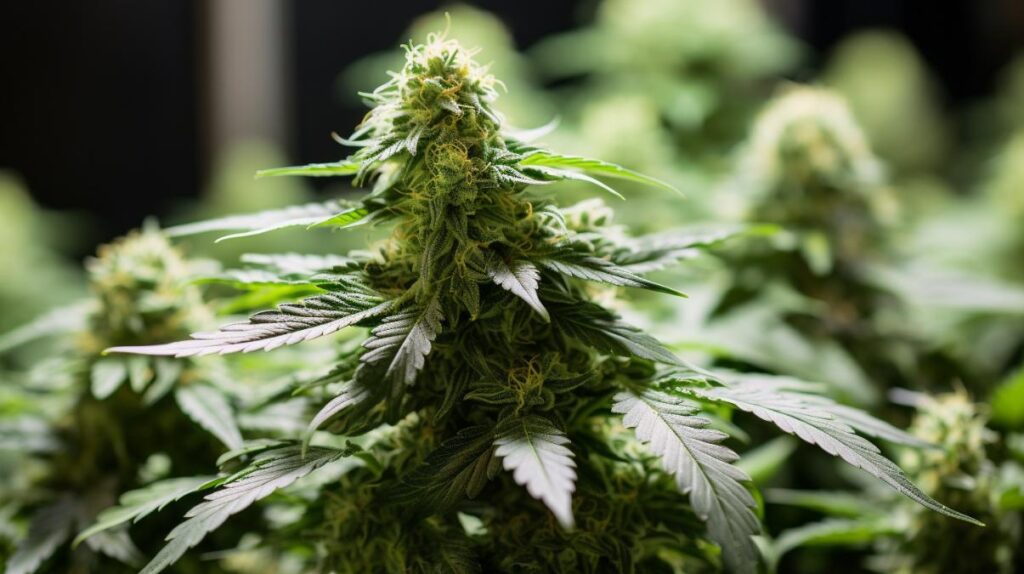
In the ever-evolving landscape of cannabis cultivation, the Carbon Fiber strain emerges as a noteworthy hybrid, intriguing enthusiasts and medical patients alike with its complex genetic lineage. This particular strain, a balanced amalgam of Cookies and Cream, Grape Pie, and Biscotti, boasts a robust THC content that typically ranges between 21% to 25%.
Its unique terpene profile yields a bouquet of sweet berry and grape aromas, underpinned by earthy undertones, which translate into a similarly nuanced flavor profile.
The effects of Carbon Fiber, reported as both calming and euphorically uplifting, have piqued the interest of those seeking respite from various conditions, including chronic stress and mood disorders.
However, beyond its immediate soothing qualities, there lies a tapestry of implications for its use, potential benefits, and considerations that warrant a closer examination, especially when juxtaposed against its contemporaries within the cannabis pantheon.
Genetic Lineage
The Carbon Fiber cannabis strain boasts an intricate genetic lineage, derived from the meticulously chosen parent strains Cookies and Cream, Grape Pie, and Biscotti, each contributing distinctive traits that define Carbon Fiber’s complex profile. This hybrid showcases the art of breeding by Cannarado Genetics, a respected cultivator in the cannabis industry.
The influence of Cookies and Cream imparts creamy vanilla nuances, while Grape Pie offers a sweet berry and grape aroma that complements the dense, purple-hued buds. Biscotti, with its rich terpene profile, provides the strain with its signature gassy terps and hints of dessert-like sweetness.
The combination of these parent strains results in Carbon Fiber’s striking dark coloration and robust chemical aromas, a sensory nod to its heritage. The uplifting effects of Carbon Fiber are attributed to its high THC levels, which are a testament to the quality genetics and selective breeding practices of Cannarado Genetics.
With its strong visual appeal and potent effects, Carbon Fiber is a testament to the breeder’s expertise in creating hybrids that capture the best attributes of their genetic predecessors.
THC/CBD Content
Boasting a robust THC content that typically hovers around the 23% mark, Carbon Fiber emerges as a significantly potent strain, with a CBD presence that remains notably low at approximately 1%. This particular hybrid strain positions itself in the upper echelons of potency, especially when compared to the average THC levels found in other strains.
Diving deeper into its cannabinoid profile, Carbon Fiber’s THC concentration can vary between 21-25%, which aligns with its reputation for delivering a profound impact on both body and mind.
The high THC levels are the driving force behind Carbon Fiber’s long-lasting calming and euphoric effects, making it a popular choice for recreational users seeking intensity and duration in their experience. Conversely, the minimal CBD content of this hybrid strain suggests a lesser focus on the non-psychoactive benefits often sought after for specific medicinal purposes.
This characteristic is critical for potential users to consider, particularly those who rely on a balanced THC/CBD ratio for therapeutic effects. In summary, Carbon Fiber’s cannabinoid composition underscores its appeal to those prioritizing a potent and immersive psychoactive journey over CBD-driven wellness benefits.
Terpene Profile
Beyond its cannabinoid content, the Carbon Fiber strain’s distinctive effects and aroma are further shaped by a rich terpene profile, including myrcene, limonene, and caryophyllene. Each terpene contributes uniquely to the overall experience of the strain, affecting not only the sensory attributes but also the potential therapeutic benefits.
Myrcene, the dominant terpene in this strain, imparts a musky and earthy scent characteristic of many indica strains. It is widely recognized for its sedative properties, which may enhance the relaxing effects typically sought by users of the Carbon Fiber strain. This terpene is often associated with the ‘couch-lock’ phenomenon, potentially making this strain suitable for evening use.
The presence of limonene infuses Carbon Fiber with refreshing citrus notes that are not only pleasant to the olfactory senses but are also cited for mood-elevating and stress-relieving effects. This terpene is commonly found in strains that offer a more uplifting experience.
Caryophyllene adds a layer of complexity to the flavor profile of Carbon Fiber, delivering spicy undertones reminiscent of black pepper. It’s noteworthy that caryophyllene is the only terpene known to act as a cannabinoid, potentially offering anti-inflammatory benefits.
Effects
Users of the Carbon Fiber strain often report a unique amalgam of effects, ranging from heightened sociability and increased appetite to a sense of amplified sensuality. As Fiber is a hybrid, it presents a complex profile of both cerebral and physical effects, which can prove beneficial for various medicinal purposes, such as anxiety, depression, and pain relief. The strain’s higher THC potency indicates that the effects may be more intense and longer-lasting compared to average strains, making it a popular choice for experienced users.
Analyzing user reports and clinical observations, the Carbon Fiber strain appears to offer a balance between calming and energizing effects. While it promotes talkativeness and social interaction, it may also induce a state of relaxation. However, like many potent strains, it can cause some undesirable side effects such as dry mouth, dizziness, and headaches.
Below is a summary table of the effects associated with the Carbon Fiber strain:
| Positive Effects | Medicinal Benefits | Potential Negatives |
|---|---|---|
| Sociability | Anxiety Relief | Dry Mouth |
| Increased Appetite | Depression Relief | Dizziness |
| Amplified Sensuality | Pain Relief | Headaches |
Medical Uses
How does the Carbon Fiber strain’s blend of effects translate into its medical applications for conditions such as anxiety, depression, and pain? User-reported feedback indicates that the calming yet energizing effects of the Carbon Fiber strain may offer significant therapeutic benefits. The strain has a higher THC content than average, which might be responsible for its potent impact on these conditions. According to user statistics, approximately 31% have found relief from anxiety, suggesting that the strain’s ability to induce relaxation could counteract the hyperarousal associated with anxiety disorders.
For the 21% of users experiencing alleviation of depressive symptoms, the uplifting qualities of Carbon Fiber may contribute to mood stabilization. The potential for pain relief, as noted by 10% of users, could be attributed to the strain’s analgesic properties, which may help to reduce discomfort without the sedative effects that often accompany pain medication.
It is worth noting that the lineage of Carbon Fiber, which includes the Grape Pie strain, is known for its soothing effects, further supporting the anecdotal evidence of its medicinal value. However, professional medical consultation is paramount as these findings are based on personal experiences rather than clinical trials.
Flavor and Aroma
While the therapeutic effects of the Carbon Fiber strain are noteworthy, its distinctive flavor and aroma profile also contributes significantly to its popularity among cannabis connoisseurs. The strain’s complex sensory characteristics make it stand out in a market saturated with various flavor profiles. Given its Cookies and Cream lineage, one might expect a sweeter, dessert-like essence. However, Carbon Fiber offers a more intricate tapestry of scents and tastes that intrigues the palate.
Users may notice the following nuances in the Carbon Fiber strain:
-
Initial Aroma: Upon opening a container of Carbon Fiber buds, the air is filled with a sweet berry and grape aroma, hinting at the strain’s fruity genetics. This is soon complemented by dank, earthy undertones that ground the initial sweetness with a more robust character.
-
Flavor Profile: The first inhale delivers a deceptive fruity sweetness, quickly followed by a gassy and slightly peppery exhale, revealing the strain’s complexity. The absence of a strong pepper taste enhances the smoking experience, allowing the user to enjoy the subtler flavors.
-
Aftertaste: Post consumption, the lingering aftertaste is reminiscent of its Cookies and Cream heritage yet is uniquely shaped by the Carbon Fiber’s own signature blend, leaving a lasting impression that is both pleasurable and memorable.
This analytical examination of the Carbon Fiber strain’s flavor and aroma demonstrates how it provides a distinct experience that goes beyond its visual appeal and potency.
Appearance
The Carbon Fiber strain’s aesthetic is characterized by its fluffy, dark green and purple-hued nuggets, which are artfully adorned with long, orange pistils and a generous coating of crystal trichomes, indicating its potency and quality. The Carbon Fiber buds present a striking tableau, with the interplay of colors offering a visual feast that hints at the strain’s robust genetic profile.
Analyzing the appearance of Carbon Fiber buds reveals a meticulous cultivation process. The buds exhibit a rich tapestry of deep greens and purples, a testament to the careful nurturing they receive. This coloration is not just for show; it often correlates with a complex terpene profile that can influence both flavor and effects.
The dense trichomes that envelop the buds are like a frosty blanket, glistening under light. This feature is suggestive of a high THC concentration, making Carbon Fiber a potentially potent option for experienced users. The visual appeal of these buds is not merely aesthetic but also serves as a quality indicator for connoisseurs and patients alike.
| Feature | Description | Implication |
|---|---|---|
| Nugget Hue | Dark green and purple | Rich in terpenes; visually appealing |
| Pistil Color | Long, orange | Indicates maturity and genetic quality |
| Trichome Coating | Dense, crystal | Signals high THC content; potency |
| Overall Appeal | Fluffy, vibrant, contrast-rich | High-quality, potent cannabis experience |
Grow Information
Cultivating Carbon Fiber requires attention to detail and precision, as this hybrid strain thrives under specific conditions to produce its characteristic high THC content and rich terpene profile. Derived from Cannarado Genetics, Carbon Fiber can be grown both indoors and outdoors, but it does not come without its challenges.
This hybrid’s cultivation is marked by the absence of seeds, as it is available in a clone-only format, necessitating knowledge in cloning techniques for propagation.
To visualize the cultivation process of Carbon Fiber, consider the following aspects:
-
Climate Control: Indoor environments must be carefully regulated for temperature and humidity to mimic its preferred conditions, whereas outdoor cultivation requires a climate that closely aligns with the plant’s needs.
-
Nutrient Management: A balanced and attentive approach to nutrient delivery is critical, ensuring that the plant receives all the necessary macro and micronutrients to support its dense, dark green and purple nugs.
-
Harvest Timing: Precision in harvesting ensures the preservation of the strain’s potent THC levels, which range between 21-25%, and its complex terpene profile that exudes sweet berry and grape aromas with a fruity yet gassy and slightly peppery flavor upon consumption.
An analytical and meticulous approach to the cultivation of Carbon Fiber is imperative for achieving its sought-after effects, which are known to induce calming and euphoric sensations conducive to socialization.
Adverse Effects
Despite the meticulous care that goes into cultivating Carbon Fiber, users should be aware of its potential adverse effects, including dry mouth, dizziness, and headaches. The manifestation of these adverse effects can vary from individual to individual, but they are commonly reported outcomes that merit attention from both recreational users and medical patients.
Dry mouth, or xerostomia, is one of the most frequently encountered adverse effects associated with the use of Carbon Fiber and many other cannabis strains. This sensation of oral dryness can lead to discomfort and is often mitigated by staying hydrated before, during, and after consumption of the strain.
Dizziness is another adverse effect that some users may experience. This can be particularly disconcerting for new users or those who consume higher doses. It is advisable for users to sit or lie down if they feel dizzy and to consume this strain in a safe, comfortable environment.
Headaches, while less common, can also occur as an adverse effect. Users who are prone to headaches or migraines may want to approach Carbon Fiber with caution or seek out strains known for a lower incidence of this particular effect.
Comparisons with Similar Strains
When considering the Carbon Fiber cannabis strain in relation to its contemporaries, one notes its unique profile of effects and flavors that distinguishes it from similar varieties. This analysis takes a closer look at how Carbon Fiber stacks up against other strains within the same category.
-
Genetic Lineage: Unlike many hybrid strains that boast a balance of Sativa and Indica characteristics, Carbon Fiber may exhibit a more complex genetic makeup. Its lineage could suggest a robust combination of traits that contribute to its distinctive high, which may offer a nuanced blend of cerebral and physical effects.
-
Potency: With a name like Carbon Fiber, there is an implication of strength and durability, which can be reflected in its THC levels. It’s essential to compare this strain’s potency to others with a similar THC range—strains that typically fall within the upper echelon, such as those hovering around or exceeding 13% THC.
-
Flavor Profile: The aromatic and flavor profile of Carbon Fiber might set it apart from others. Its unique terpene composition can lead to a distinct taste and aroma that might intertwine earthy, diesel-like undertones with a subtle hint of sweetness, distinguishing it from strains with more citrus or pine-focused notes.
Analyzing Carbon Fiber from these angles provides a clear, concise, and precise understanding of its position within the cannabis strain spectrum.
Research and Studies
Building on the comparative analysis of the Carbon Fiber strain, current research and studies provide empirical evidence supporting its strong THC content and potential therapeutic benefits. With THC levels ranging from 21-25%, the Carbon Fiber strain stands out as a potent option for those seeking the effects of high THC concentrations.
The analytical approach of recent studies highlights the strain’s efficacy in addressing anxiety, with approximately 31% of users reporting significant relief. This data suggests that the strain’s properties may interact with the body’s endocannabinoid system in a way that mitigates anxiety symptoms.
Further research delves into the potential antidepressant effects of the Carbon Fiber strain. About 21% of users have experienced a positive impact on depressive states, indicating that the strain’s composition might have mood-stabilizing attributes. This is particularly relevant for individuals seeking alternative or complementary treatment options for depression.
In terms of pain management, research points to a noteworthy percentage of users—10%—who have found the Carbon Fiber strain effective in alleviating pain. These findings are consistent with the known analgesic properties of cannabis, suggesting that Carbon Fiber may be a viable choice for pain relief.
Scientific scrutiny and anecdotal evidence also affirm the long-lasting calming and euphoric effects offered by the Carbon Fiber strain, further emphasizing its appeal to users seeking such experiences.
History and Origin
The hybrid cannabis strain known as Carbon Fiber has its origins in the meticulous crossbreeding of Cookies and Cream, Grape Pie, and Biscotti by Cannarado Genetics. This deliberate genetic amalgamation was aimed at creating a strain with not only a complex flavor profile but also potent therapeutic effects. The result is a strain that encapsulates the essence of its parent strains while establishing its unique identity in the cannabis market.
The distinctive features of Carbon Fiber can be itemized as follows:
- Its THC content ranges between a potent 21-25%, making it a powerful choice for experienced users.
- The strain boasts a visually striking appearance with fluffy dark green and purple nugs, complemented by long orange pistils and a thick coating of crystal trichomes.
- Carbon Fiber exudes an aromatic bouquet of sweet berries and grape with underlying dank, earthy notes, delivering a sensory experience that is as complex as its genetics.
In an industry where privacy policy concerns are paramount, Carbon Fiber has emerged as a reliable option for patients seeking relief from symptoms associated with chronic stress, anxiety, and mood disorders. Its history and origin reflect a commitment to quality and therapeutic efficacy.
Frequently Asked Questions
What Weed Strain Is Carbon Fiber?
The inquiry pertains to the genetic lineage of a particular cannabis variety. Carbon Fiber is a hybrid cannabis strain with a genetic composition aimed at balancing energizing and calming effects, bred by Cannarado Genetics.
What Is the Hardest Hitting Strain of Weed?
The hardest-hitting strain of weed is typically characterized by high potency, often indicated by elevated THC levels. Such strains are sought for their powerful effects, which may include intense euphoria and significant symptom relief.
What Is the Best Strain of Weed for Bodybuilders?
The optimal cannabis strain for bodybuilders should ideally enhance muscle recovery, offer pain relief, increase appetite, and provide a motivational uplift suitable for their rigorous training and dietary regimens.
What Weed Strain Gives the Most Energy?
In seeking a cannabis strain that maximizes energy boost, one should consider varieties with high THC and sativa dominance, known for their energizing and uplifting effects, to enhance alertness and mitigate fatigue.

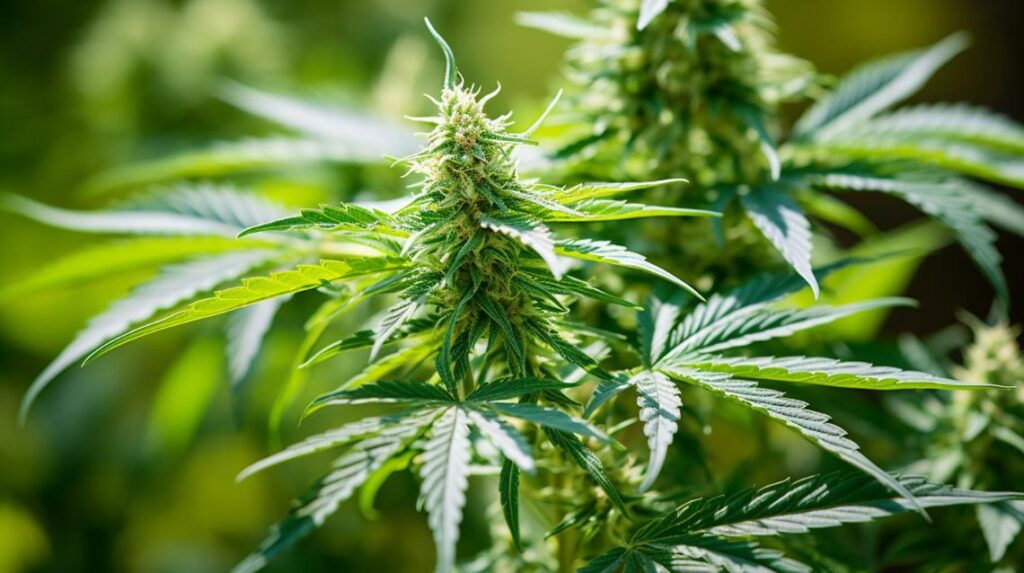
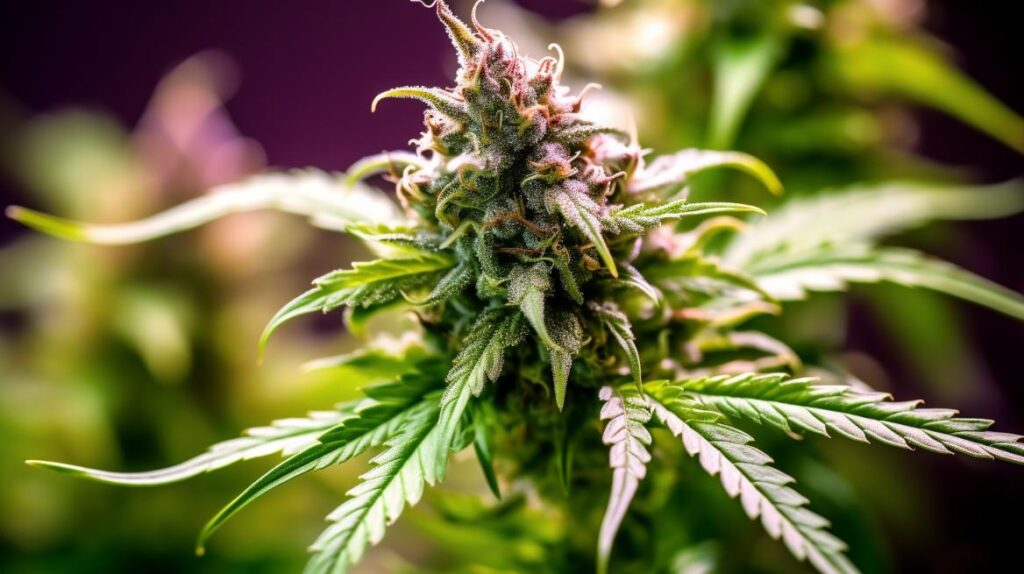
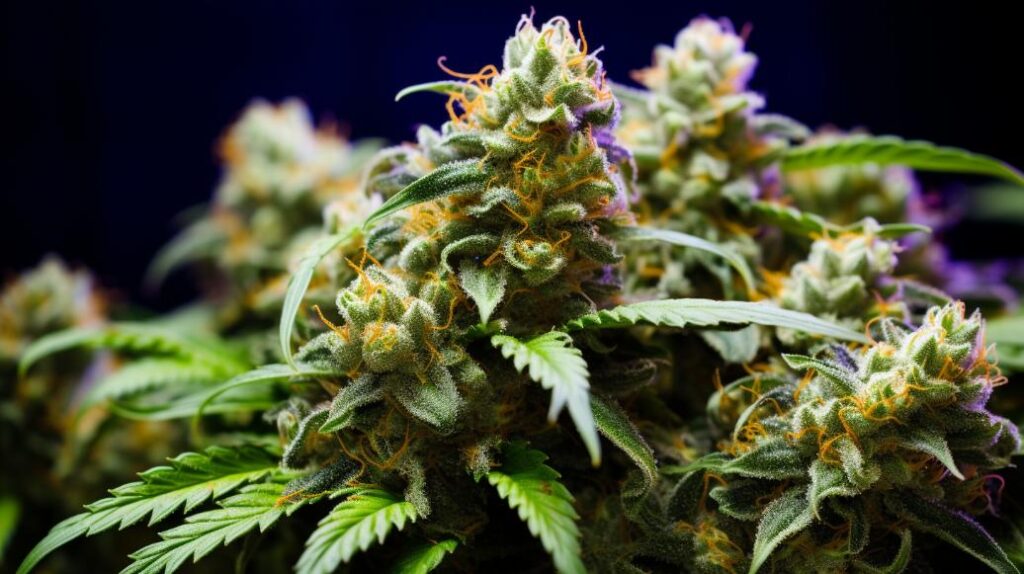
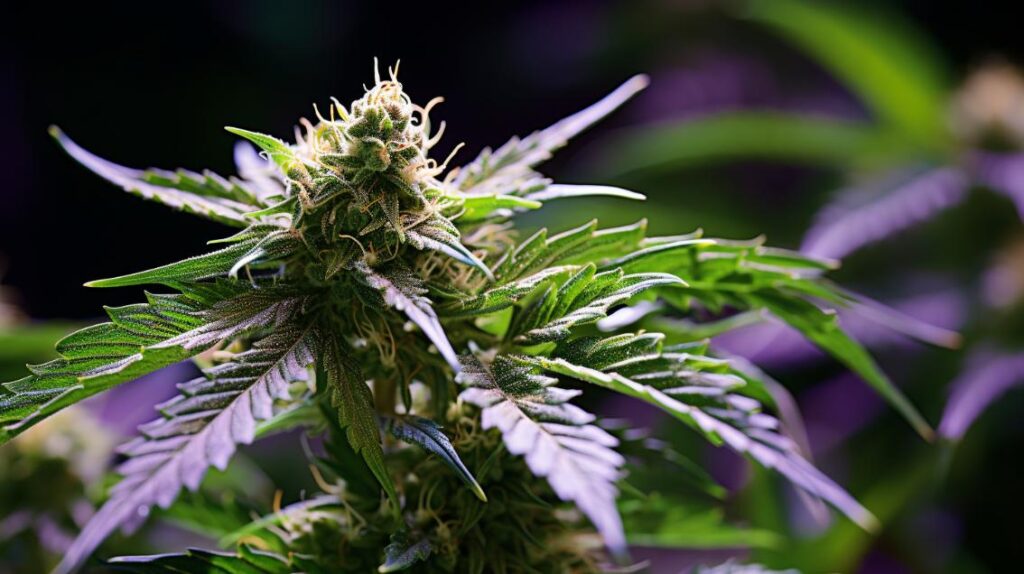
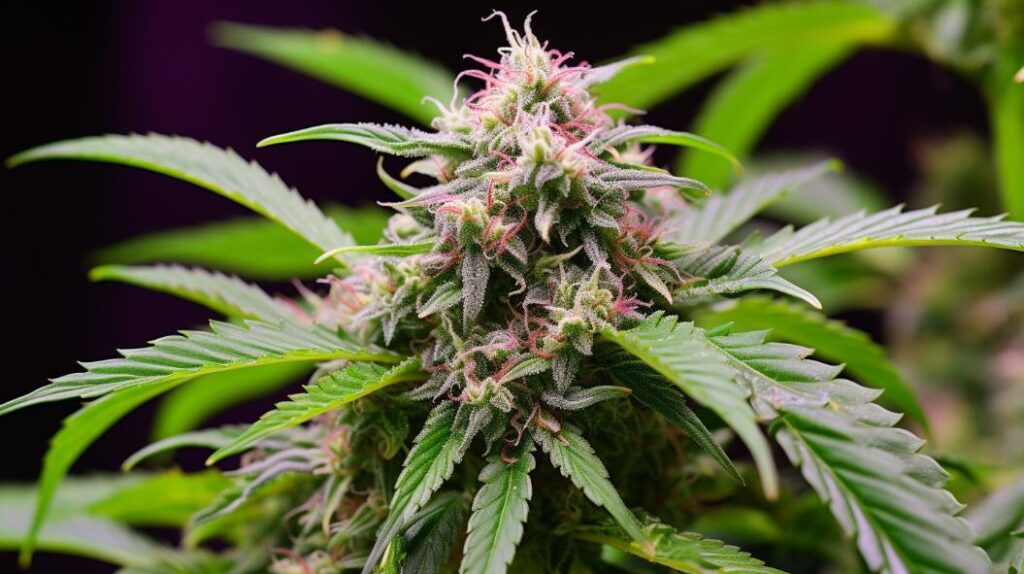

Responses